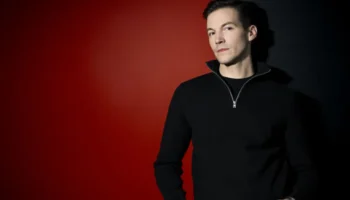Every year, former Eurovision Song Contest participants take the risk of entering their national selection again. But more often than not, the risk does not pay off.
Vanessa Chinitor is the first victim of the trend this year. She performed for Belgium at the 1999 contest in Jerusalem. Yesterday night, she failed even to get through the first qualifier of the Belgian selection Eurosong 2006.
A look back at past years confirms the pattern. Despite the commercial success and popularity of her 1996 entry for the UK, Gina G ended up a dismal last place in the 2005 UK selection. Nanne Grönvall achieved third place as part of One More Time for Sweden in 1996. She tried to represent both the UK (2001) and Sweden again (1998, 2005) but was denied the opportunity. Fame, fresh from a top five placing in 2003, tried and failed to represent Sweden in 2004.
The trend is not new. Kate Guldbrandsen sang Norway to a confident ninth position in 1987, but remained unplaced in the 1989 Melodi Grand Prix with Naerhet. The 1982 German selection saw a whole clutch of former participants fail: Séverine (Monaco 1971), Paola (Switzerland 1969 and 1980), Jürgen Marcus (Luxembourg 1976) and Mary Roos (Germany 1972 and later 1984). Germans were clearly in the mood for something new that year!
Once bitten, twice shy?
Tor Endresen never even made it to a Eurovision Song Contest final in nearly ten years of trying. When he finally did top the poll to sing for Norway, he ended up last in Dublin in 1997. Little wonder, perhaps, that Norwegian voters were reluctant to award him a second chance for his subsequent attempts in 1999 and 2005!
Comeback kings and queens
The story is not all bad, though. Some performers succeed in a comeback and return to the Eurovision Song Contest stage. Chiara bettered her 1998 third place to second for Malta in 2005. Roger Pontare won Swedish hearts as a solo singer in 2000, improving on his 1994 placing singing with Marie Bergman. Darja �vajger made a successful debut for Slovenia in 1995, and was selected once more in 1999. Hot Eyes made it a hat-trick for Denmark, winning no fewer than three Danish selections in the 1980s. Alone, however, lead singer Kirsten Siggård was left unplaced by Danes in 1990.
Hanne Krogh and Elisabeth Andreasson made the ultimate improvement. Apart, they achieved at best eighth and at worst, 17th place. Together, the provided Norway with its first winner in 1985. Sadly for Hanne, success was elusive, and as part of Just 4 Fun she sank back down to 17th place in 1991. Luckily, Elisabeth returned in 1996 to bring Norway to a celebrated second place on home ground.
Successful comebacks at the national stage are by no means always followed by success on the international stage. Fellow Norwegian Ketil Stokkan may have wished his second Norwegian entry hadn�t topped the 1990 selection � he ended up joint last at the Eurovision Song Contest in Zagreb.
Only Johnny Logan has achieved the ultimate: a double whammy, winning both the Irish selection and Eurovision Song Contest in 1980 and 1987. As a writer, he came back to win both again in 1992. But even he stumbled as a writer of the Dutch hopeful How does it feel in the 2005 semifinals.
Fabrizio Faniello returned to the Maltese national final in 2004, finishing third. In 2005 he dropped to a 12th place and he's testing his luck once again in this year's Maltese final.
Ich Troje, Carola, Vicky Leandros, Barbara Dex and Geir Rønning will be amongst those hoping for a return of former good luck in this year�s national selections. Is it a risk worth taking?



